Houseplants may be one of the most popular plants in the world, but that doesn’t mean they like to sit in water all the time. Many houseplants love a little bottom watering. Regular watering encourages plant growth while preventing root rot and other problems. Houseplants that love bottom watering are perfect for those who want to water their plants frequently and efficiently.
These plants require very little water and can quickly absorb it through their root system, ensuring their roots are watered at once. Bottom watering also helps to prevent soil erosion and keeps your plants healthy by providing them with the right amount of moisture. Let’s check out more information about 7 houseplants that love bottom watering below.
Difference between bottom watering and top watering
There are a few key things to keep in mind when watering plants. One of the most important is how often you water them. It’s better to water your plants several times a day, especially if they are in an area with limited rainfall. Another thing to consider when watering your plants is how you will deliver the water.
Bottom watering is the practice of watering plants from the soil surface. This method is often used when plants are in containers or when the plant’s pot cannot be easily reached. Top watering is watering plants from above the soil surface, which can increase evaporation and cause plants to suffer from waterlogging.
The benefits of bottom watering houseplants
- Bottom watering plants get their water from the soil below the surface. This watering allows the plant to extract more nutrients and moisture from the soil, which can help it grow faster and healthier. Bottom watering plants are typically chosen for their low water needs and are often easy to care for since they don’t require much attention.
- Bottom watering is one of the most important things you can do for houseplants. Doing this will help to keep them healthy and happy, and it will also encourage them to produce more flowers and foliage. Bottom watering helps keep your plants healthy by providing them with a consistent water supply. This encourages them to grow and produce flowers and foliage, freeing them from pests and diseases.
- This type of watering is less stressful for the plant. Since water doesn’t splash around and cause root exposure, your plant can concentrate on recovering from drought without feeling stressed. Bottom watering also helps to regulate humidity levels in the house. Higher humidity levels help plants defend themselves against pests and diseases, while lower humidity levels can lead to condensation problems and mold growth. Finally, keeping your plants well-watered with consistent bottom watering will encourage them to grow larger and produce more flowers and foliage.
7 houseplants that love bottom watering
African Violets
Many types of houseplants love being bottom watered. African violets are one of these plants. When water is allowed to sit in the bottom of the pot, it helps to remove any built-up salts and minerals that may affect the plant’s health. African violets also like lots of light and humidity, so keeping them in a sunny spot with a moist environment is ideal. African Violets are grown as houseplants in areas with cool winters. African violets grow best when they receive 8 hours of sunlight per day.
In case you missed it: List of Houseplants That Grow from Leaf Cuttings
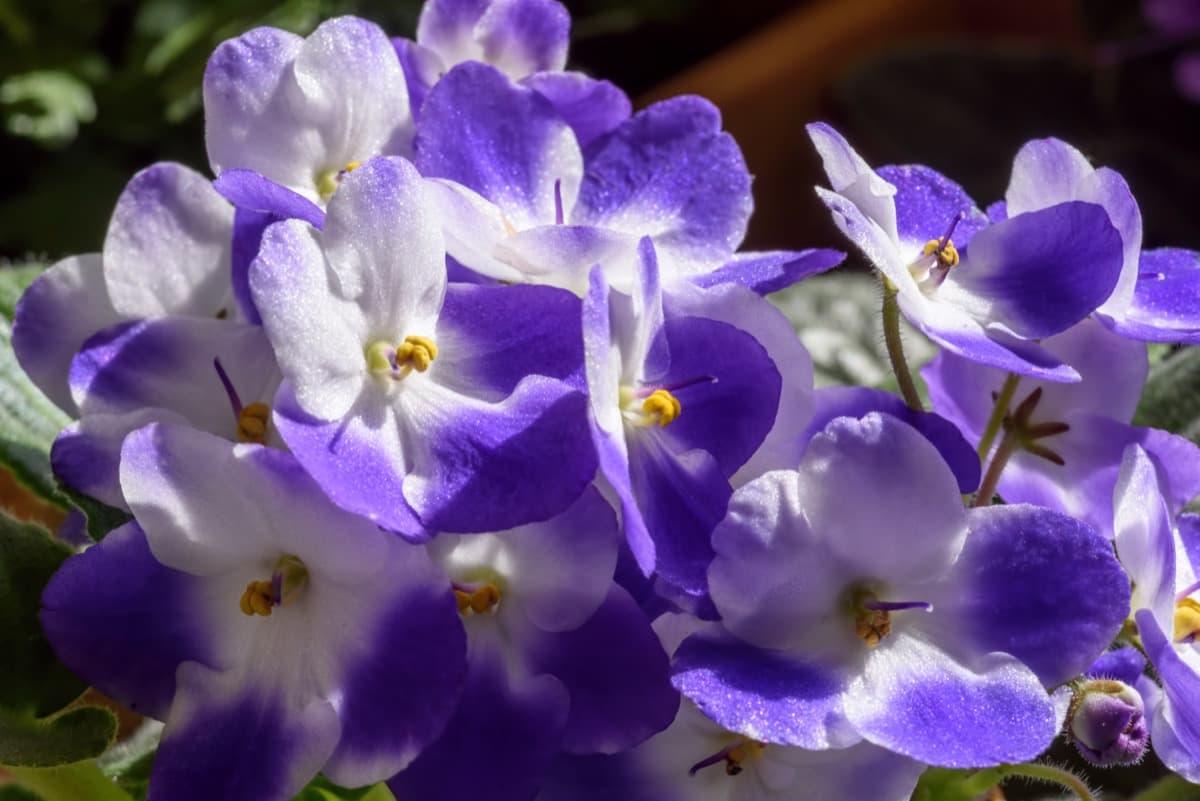
African Violets are beautiful houseplant that loves to be bottom watered. This is because they have a thick layer of cells that allows them to store water, which helps them survive dry spells. To water African Violets properly, you will need to gently pour a small amount of water into the bottom of their container and wait until the water reaches the roots before refilling. You should also regularly check their soil moisture level and refill their pot as needed.
Snake plant
Snake plants are popular houseplants because they tolerate various soils and temperatures. They are particular fans of low light, so place them near a window or other bright spot. Snake plants grow best when watered regularly with bottom watering, which helps to prevent soil from becoming dry and cracked. Snake plants are the most popular houseplants.
In case you missed it: 12 Pet Friendly Houseplants: Safe for Dogs and Cats
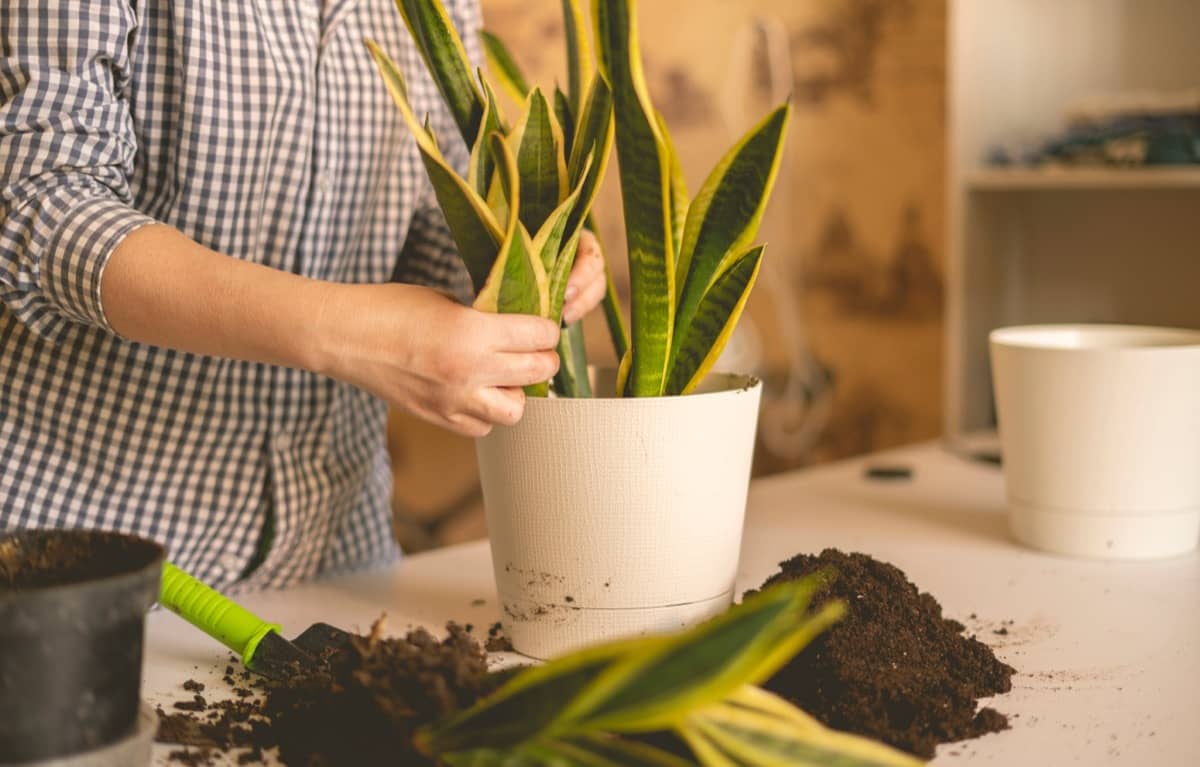
Snake plants like to be watered from the bottom, so be sure to water them regularly and never let their soil get dry. Snake plants flourish in indirect or filtered light and need periodic watering. Snake plants are drought tolerant once they adjust to their new environment but will do better with bottom watering. Keep the soil moist, and you can fertilize every two months with a balanced liquid fertilizer. Water deeply and infrequently during the winter when the plant’s roots are dormant.
Peace Lily
Peace Lilies are a popular houseplant that loves to be bottom watered. This watering allows the plant to absorb water through its roots rather than the leaves. By doing this, you can help to keep your peace lily healthy and happy. This plant is easier to care for and will tolerate a wide range of temperatures, making it perfect for almost any home. Remember that this plant does best with regular watering and moderate light levels.
In case you missed it: How to Choose the Suitable Container for Your Houseplants: Key Rules and Ideas
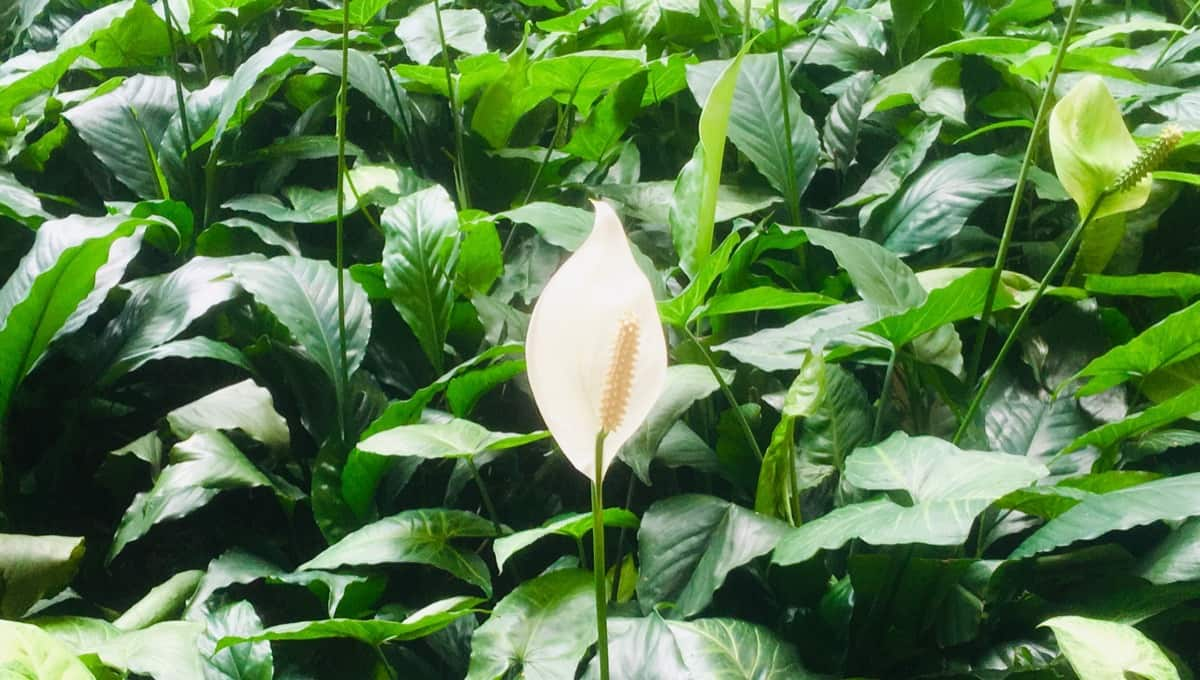
Some plants prefer to have their roots submerged in water as it helps to regulate their moisture levels. Peace Lilies are one such plant and will do well when given bottom watering. When watering these plants, pour just enough water into the pot so that the root area is wet but not standing in water. Be sure to give these plants plenty of sunlight and fresh air, and continue to do so throughout the growing season.
Jade plant
Jade plants are one of the easier houseplants to water. They like moist soil but don’t require frequent watering. Suppose your Jade plant is wilting or showing dryness; water it lightly. Make sure to water the root area and not the leaves. Jade plants do best when kept in a semi-shaded environment with indirect light. Jade plants are a great option for those who want an easy-to-care-for houseplant.
In case you missed it: Growing Jade Plants In Pots – Containers, Indoors
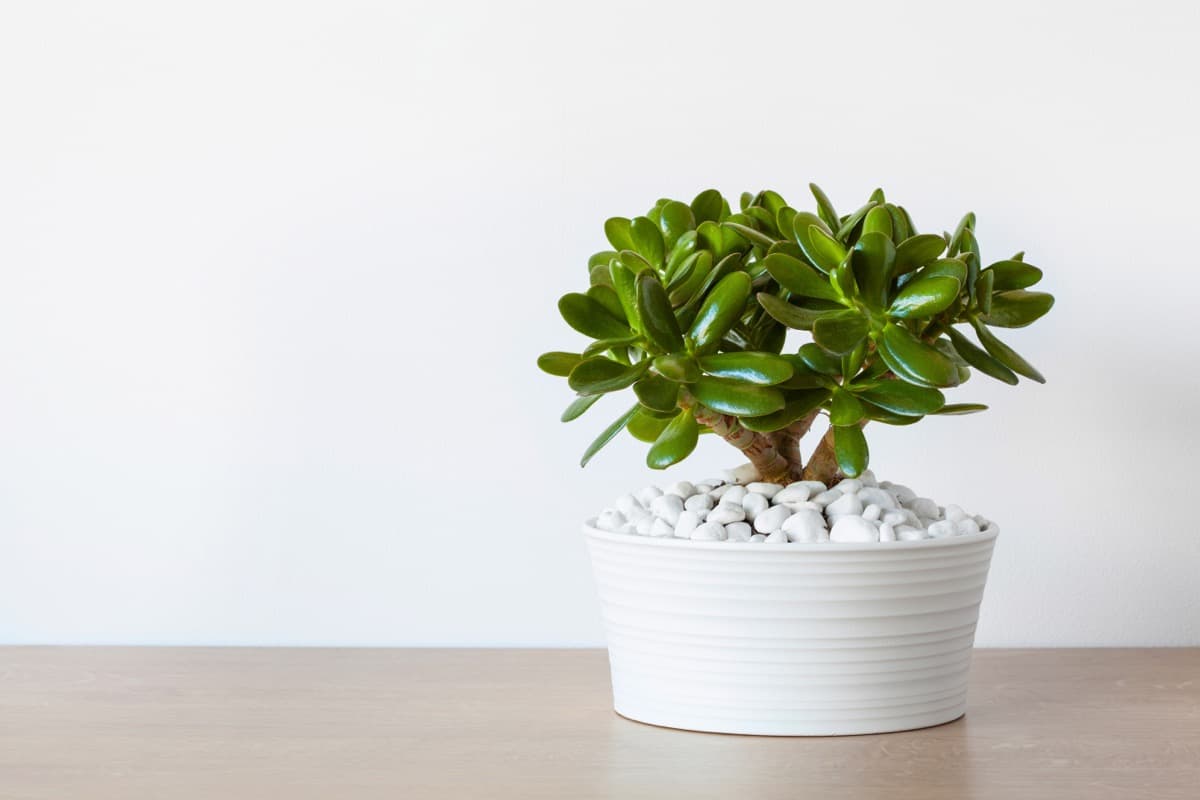
These plants like moist soil and ample sunlight but don’t require a lot of water. To ensure that your Jade plant always has the moisture it needs, you should bottom water it once a week. For a good reason, Jade plants are one of the most common bottom watered houseplants. They love a moist environment and perform well in a pot with plenty of drainages. One downside to Jade plants is that they can be sensitive to environmental changes, so it’s important to keep an eye on them if you’re moving them around a lot or using different watering schedules.
Pothos
Pothos is the easiest houseplants to grow and loves to have their roots covered in water. This makes it a great plant for those who live in apartments or other locations where water is not readily available. Make sure to give your Pothos enough hydration, and it will be happy. Make sure to clean up any messes regularly, or your plant may start to suffer. And lastly, don’t forget to feed your Pothos once a week. Just a little fertilizer will do the trick.
In case you missed it: Growing Organic Curry Leaves (Kadi Patta) – At Home
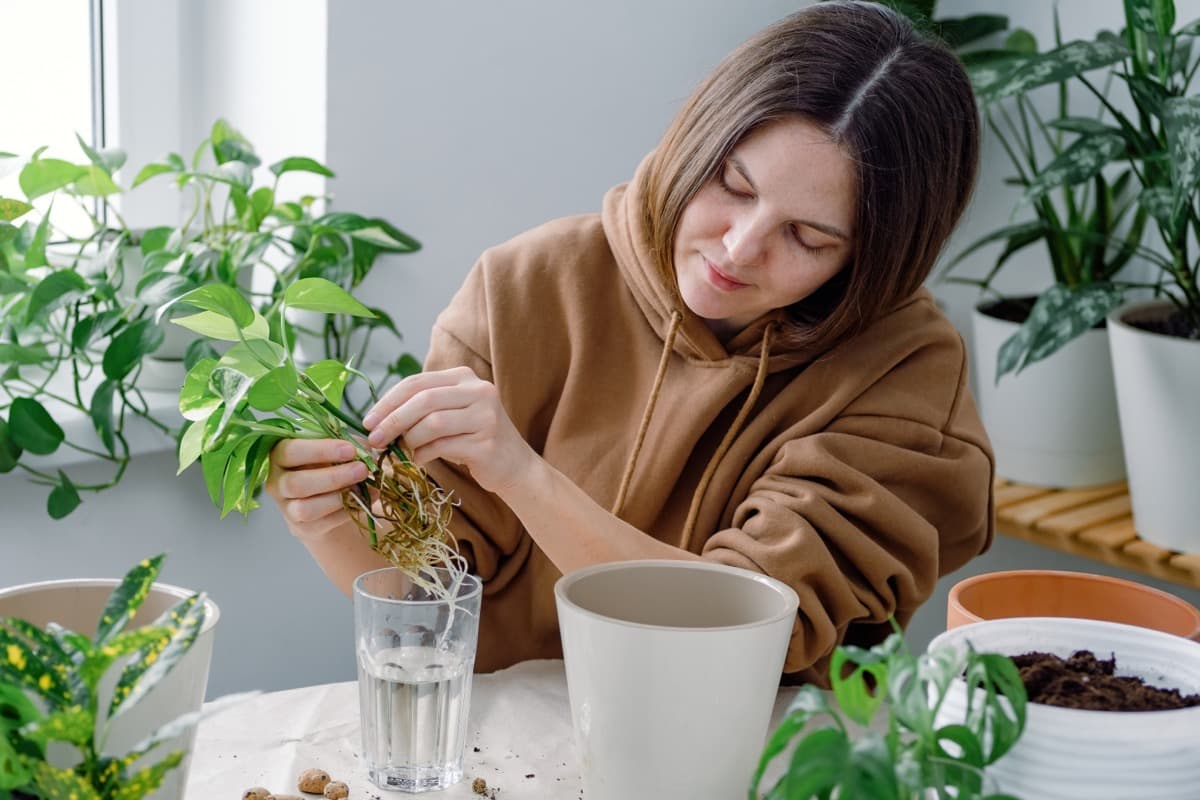
Pothos typically grows to a height of two feet. It has long, skinny leaves on the top and light green on the bottom. Pothos thrives in low light, so it does well in areas with little natural sunlight. You can water it from below or pour water onto its soil surface from a height. Do not water it too frequently, or it will become pot-bound. This low-maintenance plant grows quickly and can be kept in any room. Best of all, it only needs to be watered once or twice a week, making it an ideal choice for busy homeowners.
To water your Pothos, fill a freshwater basin and place it near the plant. Let the plant soak up the moisture before draining the water. You can also mist your Pothos weekly with a spray bottle with lukewarm water to keep them hydrated. If you notice that your Pothos is wilting or shows any other signs of distress, give it a quick water bath to revive it. Don’t forget to fertilize your Pothos every few months with a liquid foliar fertilizer. This will help promote healthy growth and reduce the need for frequent watering.
Philodendron
Philodendrons are some of the best houseplants for bottom watering because they love them. They grow better and faster when their pot is constantly wet. This means your water droplets will be hitting the roots directly instead of falling on the surface and evaporating. The downside is Philodendrons can get messy if their pot becomes too wet, so check on them every few hours to ensure everything is okay. You can also try using a bog orchid fertilizer in addition to bottom watering; this will help promote healthy growth.
Philodendrons are tropical plants that are often used as floor plant ornaments. They are easy to care for and require only occasional watering. When watering Philodendrons, be sure not to overdo it since this could cause them to become dehydrated. Rather than tap water, try using rainwater or distilled water if you can access it.
Calathea
There are a few houseplants that love to be watered from the bottom. Calathea is one of these plants. This succulent like to have its roots in wet soil and often looks unhappy when left without water for too long. However, if you bottom water Calathea regularly, it will thrive and produce beautiful flowers. To bottom water Calathea, start by filling a sink or bucket with enough water to cover the plant’s root ball.
In case you missed it: 20 Common Houseplants/Indoor Plants Problems: How to Fix Them, Solutions, and Treatment
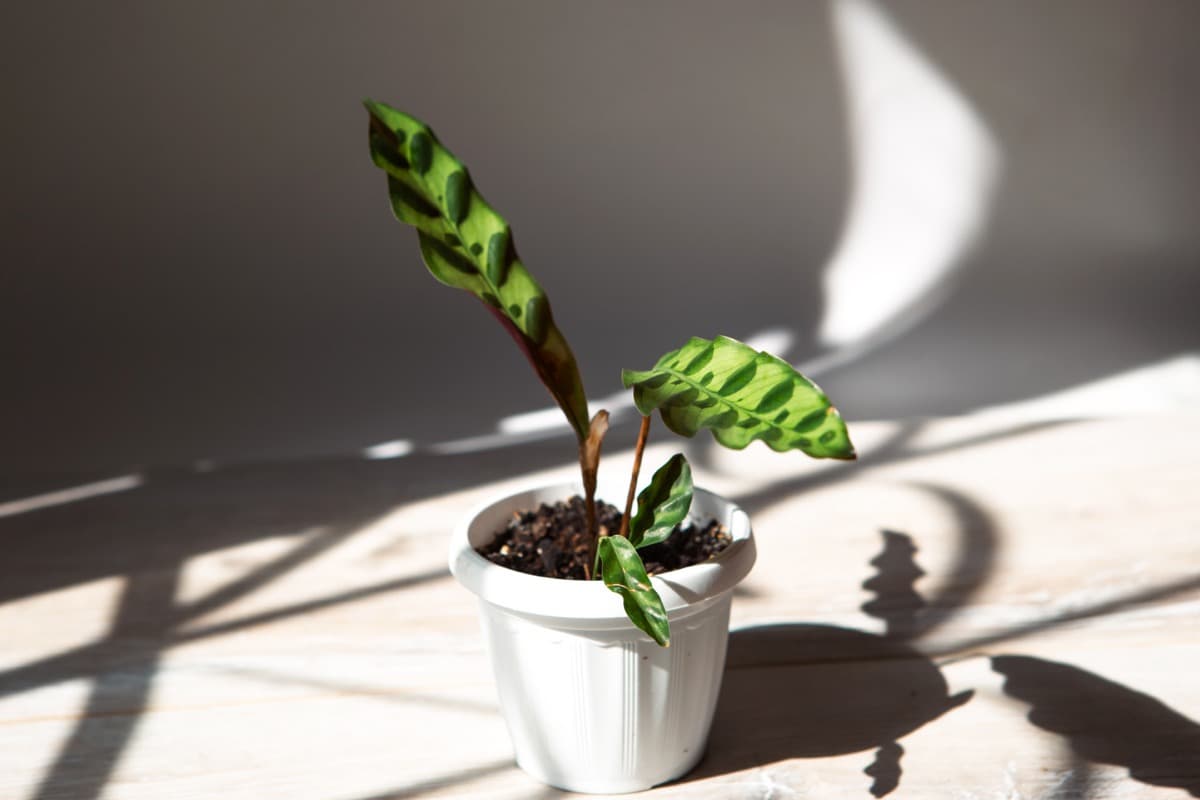
Add a little salt if desired. Let the plant soak up for several minutes, then drain it away slowly so it doesn’t splash onto the leaves. Repeat this process until all the water is drained from the pot or sink. This succulent is native to the tropics and can tolerate dry and wet environments. Let the pot sit where it will receive direct sunlight but won’t be constantly wet. Don’t water your Calathea again for two or three days after initially watering it; this will allow the soil to soak up the water properly.
Conclusion
Houseplants that love bottom watering are some of the easiest plants to maintain. Watering them from the bottom prevents waterlogging, which can cause root rot and other problems. Additionally, by keeping your plants wet at all times, you encourage them to grow new roots and absorb more nutrients.
- Flower Garden Designs and Layouts for Beginners
- Planting and Spacing Techniques in Papaya: A Beginner’s Guide
- Growing Gold: Essential Techniques for Planting Pineapples
- How to Make Kalanchoe Plant Bushy: Home Remedies and Solutions
- 11 Reasons Why Your Gardenia is Not Blooming: Home Remedies and Solutions
- Eco Elegance: The Guide to Designing a Drought-Tolerant Landscape
- Gardening on a Slope: Strategies for Hillside Landscaping
- Nourish and Flourish: Top Organic Mulches for Thriving House Plants
- Everything You Want to Know about Indian Mogra Flower: Discover Uses and Growing
- Green Thumb Success: Expert Tips for Cultivating Greenhouse Pumpkins All Year Round
- Maximize Growth & Flavor: The Ultimate Guide to Companion Planting in Herb Gardens
- How to Control Rhododendron Problems Naturally: Home Remedies and Organic Ways to Fix Them
- Natural Magic: The Remarkable Benefits of Cinnamon for Plants
- Best Steps to Revive Dying Tulip with Natural and Organic Treatment
- 10 Reasons Why Your Angel Trumpet is Not Blooming: Remedies and Treatment
- How to Fix Periwinkle Leaf and Flower-Related Problems: Natural Remedies and Solutions
- How to Fix Zinnias Leaf and Flower Problems: Discover Natural and Home Remedies
- Organic Steps to Induce Lemon Tree Flowers: A Comprehensive Guide
- Bloom Booster: Crafting the Perfect Homemade Bougainvillea Fertilizer
- Optimizing Growth: A Guide to Applying NPK Fertilizer for Potted Plants
- 10 Best Homemade Fertilizers for Rubber Plant: DIY Recipes and Application Method
- How to Boost Female Pumpkin Flowers: Effective Steps for More Flowers and High Yields
- Transform Your Indoor Garden: Top Benefits of Pink Salt for Houseplants
- 10 Best Homemade Fertilizers for Peacock Plants (Calathea): Easy DIY Guide
- Unlock Blooms: 9 Reasons Why Your Potted Chrysanthemum is Not Blooming
- 8 Reasons Why Your Potted Hibiscus is Not Blooming: Fix it with Simple Solutions
- Unlock Blooms: 9 Key Reasons Your Potted Frangipani Won’t Flower
- 10 Reasons Why Is My Ice Plant Not Blooming: Remedies and Treatment
- 10 Reasons Why My Potted Hydrangea Not Blooming: Treatment and Remedies
- 10 Reasons Why is My Wisteria Not Blooming: Remedies and Treatment
- 10 Reasons Why is My Goldfish Plant Not Blooming: Remedies and Treatment
- Maximize Your Space: Ultimate Guide to Balcony Gardening with Grow Bags
- 10 Reasons Why Your Iris is Not Blooming: Remedies and Treatment
- 10 Reasons Why Your Anthurium Plant is Not Blooming: Treatment and Remedies
- 10 Reasons Why Your Aquaponic Plants Are Not Flowering: Remedies and Treatment
- 10 Reasons Why Your Agapanthus is Not Flowering: Remedies and Treatment